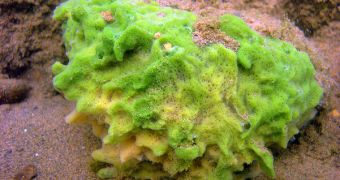One of the most peculiar and complex natural compounds, which was discovered many years ago inside sea sponges, has become the target of an international competition of sorts. Numerous research groups around the world have attempted to synthesize the elusive chemical Palau’amine in the lab, but, for as long as 17 years, these efforts have been in vain. Finally, a group announces that the goal has been reached, putting an end to the contest. The crown goes to a team of experts at the Scripps Research Institute, who were led by expert Phil Baran, Wired reports.
The compound is renowned among experts because it has important antifungal, antibiotic and anticancer properties, but the teams investigating methods of artificially synthesizing it were not necessarily interested in these aspects. Because the “underground” competition has been going on for so many years, it has become a matter of pride, glory and recognition for any team that could finally synthesize the enormously complex compound. The simplest process that leads to obtaining Palau’amine, the Scripps team says, features no less than 25 steps, which is a lot, it adds.
In addition to obtaining the elusive chemical, the new investigation also brought with it a host of pieces of knowledge that could be applied in synthesizing the medical cures of tomorrow. The researchers needed to find new ways of combining atoms together, so as to produce the exotic structures of the molecules that made up Palau’amine. In the future, these manipulation techniques could be used to create other artificially synthesized chemicals that could be used against numerous diseases. Details of how the Scripps team reached the Excalibur of artificial synthesis appear in the latest issue of the respected international journal Angewandte Chemie.
A certain sea-sponge species, native to the South Pacific island of Palau, produces this massively complex chemical to kill everything trying to eat it. People living in the region are thought from an early age to steer clear of the sea sponge, so as to prevent any contamination with Palau’amine. “It’s known by the indigenous people of Palau as the toxic sponge. They know, don’t mess with that sponge. And part of the reason is that it makes crazy things like this,” Baran says. The expert can now take pride in his team's results. It has managed to create a compound that ranks in the extremity of the “difficult” scale of molecular chemical synthesis.
“Its nasty physical properties had undermined total synthesis endeavors in leading laboratories worldwide,” University of California in Irvine (UCI) organic chemist Larry Overman says of the chemical, quoted by Chemical and Engineering News. “It’s a highly strained compound. If you make a plastic model of the compound, it wants to pop open,” Baran reveals. “The overriding goal is invention. The general theme of our lab is to at least match, if not outdo, nature,” the expert concludes.

 14 DAY TRIAL //
14 DAY TRIAL //